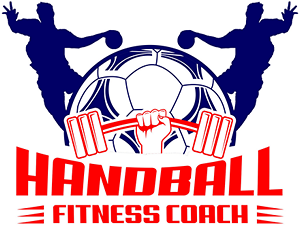Why is handball so far behind?
Handball is one of Europe’s most popular sports (ranking only behind football in many parts of Europe) and played by literally tens of millions around the world (50 million according to the IHF). Yet despite the enormous popularity of handball, coupled with handball being such an explosive and dynamic sport that provides so many physical challenges for the body – and therefore so much potential for improvement in performance via physical means – there is still so little information out there in terms of strength and conditioning specifically for handball.
When compared to other sports that are superficially similar in terms of physical requirements – such as basketball or volleyball as a couple examples – handball is well behind in terms of the amount of and the depth of research conducted (on things like the physical conditioning for the sport, GPS analysis, physical profiling, injury rates and areas, etc.) Additionally, and even more relevant to players out there, is that when it comes to readily available information and direction that can actually be used by players, it is virtually non-existent. This is in stark contrast to those sports of basketball and volleyball that we mentioned earlier, which have enormous amounts of both research, as well as usable information and programs and books and websites around.
And if you need proof that available research doesn’t necessarily mean it is useful to the average person, check out this from Aspetar – which is the top sports medicine journal in the world. They did this issue based entirely on handball and included fantastic contributors like the brilliant Marco Cardinale. But after having a sift through this publication, I ask you – do you get any use out of this what so ever? No. So it is one thing for more research to be done, and to start to become available in handball, but the reality is, it is useless for the average player who needs more practical direction.
But the question comes back to why is handball so far behind in terms of this research but also information and direction out there?
One key reason that strength and conditioning for handball specifically is so limited stems from the fact that acceptance of strength training as an important part of a quality program has been a little slower to catch on within the culture of handball itself. The old prejudices of strength training ‘making you too muscle bound’ or ‘slowing you down’ as well as ‘not having carryover to handball’ still linger in handball, where other sports have been quicker to catch on to its benefits – provided it is done correctly of course. We wont go into more detail on this here – as it is covered throughout the rest of the site. The link culturally to football (soccer) in European clubs also has an impact on this, as football is another sport that has been very slow and reluctant to accept strength and power training methods due to a lack of understanding of what the true benefits and aims are (NOT ‘putting on size’ like is commonly thought) as well as an attitude that simply playing the sport or abbreviations of it (like small sided games, or other abbreviated versions of the game with specific tasks) is enough to build the physical capacity for the sport. However even the football world (particularly in Germany and the Scandinavian nations) has started to catch on that this is a very narrow and incorrect way of approaching things.
“Strength training is of fundamental importance for handball players. An effective training program has the potential not only to improve performance but also to significantly reduce the risk of injuries.”
Marco Cardinale
ASPIRE Sports Academy
Another reason may be the financial one – the fact that there is a lot less money in handball than there is in a sport like basketball (even in parts of Europe where handball is a dominant sport, basketball still appears to be much more of a money spinner.) But the fact that there is less money at the very top level may impact the interest in doing the research and the developing of the area. However this doesn’t explain why volleyball still has far more information, direction and pre-existing science out there. Additionally, handball has more various physical demands and movement patterns than a sport like volleyball. This increased complexity may actually be part of the reason for the lack of both research as well as information out there (as it may become more complex) – although in reality we would expect this to have the opposite effect.



But beyond old cultural prejudices within the sport (particularly in Europe where the epicenter of the sport is) and perhaps the financial aspect, there really aren’t any other identifiable areas as to why this has been the case. The good news is that the handball world is starting to learn and grow – first with the ‘old-world’ mentality towards strength and power training within the sport gradually dissolving, as well as with more research being conducted and being made available (although admittedly it still remains absolutely useless for the average person/player.)
Of course the inspiration and aim for this site is to provide usable content, which takes the specific research done within the sport, as well as taking the best work from world leaders in other sports and sports/athletic conditioning in general, and applying the relevant and usable aspects to handball – in terms of specific and usable content in the form of information/principles, specific exercises and of course even more importantly, the actual programming and variables.
The wheel is slowly turning, we can just do our bit to get it moving that little bit quicker and making it accessible or usable for the everyday player or local coach out there.
Don't forget to get your free report 10 Simple Tips to Instantly Enhance your Handball Strength & Conditioning Program here.
